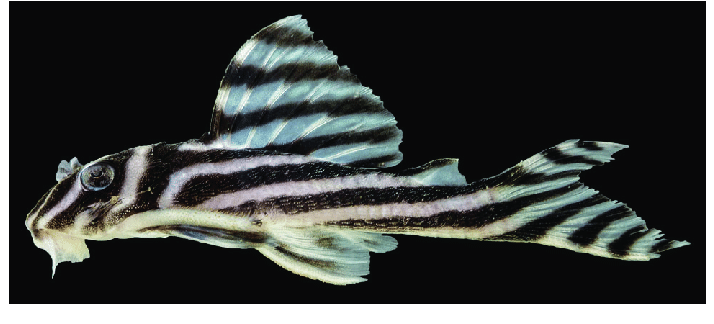Beauty and the Beast
Protection for the Zebra Pleco at CITES 2022
Lawrence Dale Cooper
The so-called Zebra Pleco (Hypancistrus zebra), a beautiful stripey catfish from Brazil, is too beautiful for its own good. Thanks to the demands of the pet trade, it became endangered at the national level. H. zebra is a species of catfish endemic to a small section of the Rio Xingu in Brazil. It gets its name from its black and white zebra stripes. In the past this species was exported from Brazil for sale as aquarium fish; currently, the Brazilian government bans the export of H. zebra.
H. zebra is also threatened by the Belo Monte Dam in the Xingu River which has caused a severe reduction of the water flow of the entire distribution range of the species. Due to this, the species has been classified as critically endangered and may soon become extinct in the wild. It is subject to several captive breeding programs. It’s now commercially bred in captivity for the aquarium trade.
H. zebra plays a vital role in its ecosystem, it’s an omnivorous species with carnivorous tendencies. It feeds on plant-matter, detritus, and invertebrates. Because it is small, it is easy prey for larger fish. Like many Loricariidae (catfish), it has a role in the nutrient cycle and makes nutrients available to different levels of the food chain.

Why this proposal is needed
H. zebra is a species of international ornamental interest that has a slow growth rate, high mortality rate and low fertility. The installation of the Belo Monte Hydroelectric Power Plant (HPP) has led to a reduced flow in sections, making the species more vulnerable to capture for the illegal ornamental fish trade. It is estimated that around 10,000 individuals a month are still trafficked for international trade. It’s projected that, in a period of 10 years (2016-2026), there will be a population decline of more than 80%, with an exceedingly high risk of extinction.
The species is being affected by international illegal trade and should be subject to strict regulations to prevent and combat these threats and make an important contribution to ensuring its survival in the wild.
The full Proposal, CoP19 Prop. 41, can be found at: Proposal for amendment of Appendix I or II for CITES CoP19
What Sea Save Foundation Is Doing
We are collaborating with delegates at this year’s conference to enact changes to the international trade of endangered species that will protect them globally. We do this by offering creative, economically viable, sustainable, and environmentally friendly plans to decision-makers. We recognize this challenge is not only to protect wildlife, but to ensure the economic livelihood and food security of people.
We are credible, scientific, and connected. We have sent three delegates to this year’s conference, including our director, Georgienne Bradley, who recently earned a master’s degree in the Management and Conservation of Species in Trade. To date, only a select number of students have completed this specialized training in scientific bases, techniques and instruments that enable CITES implementation and development to combat illegal international trade of wildlife.




